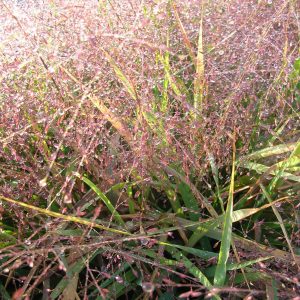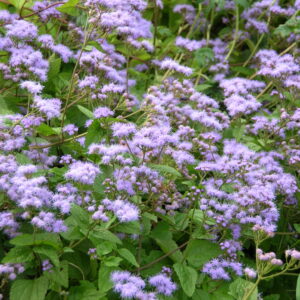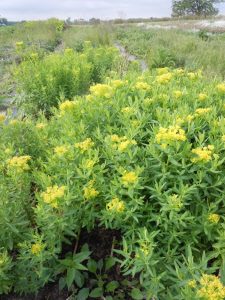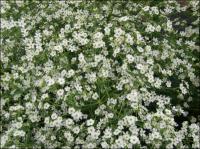Prairie Plants
Showing 33–40 of 81 results
-
Echinacea pallida Pale purple coneflower Z 4-8
Narrow, weeping pink rays in early summer surround hedgehog-like cone.
Narrow, weeping pink rays in early summer surround hedgehog-like cone.
Size: 2' x 14"
Care: Full sun in well-drained soil.
Native: much of continental US east of Colorado
Wildlife Value: attracts bees including bumblebees and caterpillars of some Skippers and a few moths. In fall finches eat the seeds. Deer resistant
Awards: Great Plants for Great PlainsEchinacea is Greek meaning hedgehog referring to the bristly conehead. Used to cure many ailments – arthritis, rheumatism, burns, colds, boils, fever, sore mouths, throats & gums, toothaches, snakebites, headaches, stings and distemper in horses – by several tribes – Cheyenne, Crow, Dakota and Sioux. 1st collected by Englishman Thomas Nuttall (1786-1859) who searched much of No. America finding thousands of new plants.
-
Eragrostis spectabilis Purple Love grass Z 5-9
Profuse tiny purple panicles in August-September. One of internationally known garden designer Piet Oudolf’s 100 “MUST HAVE” plants, Gardens Illustrated 94 (2013)
Profuse tiny purple panicles in August-September. One of internationally known garden designer Piet Oudolf’s 100 “MUST HAVE” plants, Gardens Illustrated 94 (2013)
Size: 2’ x 18”
Care: Full sun in well-drained soil - slow to emerge in spring. Drought tolerant
Native: Maine west to Minnesota, south to Arizona, Wisconsin nativeEragrostis is Greek meaning “love”, (eros) and grass, agrostis. This species first named by German botanist Frederick Pursh (1774-1820) in his book Flora Americae Septronalis. (1813)
-
Eryngium yuccifolium Rattlesnake master Z 3-8
Blooms July-October, prickly round white umbels. Leaves like thinner versions of a Yucca
Blooms July-October, prickly round white umbels. Leaves like thinner versions of a Yucca
Size: 48” x 18”
Care: Full sun, moist well-drained soil, Heat and drought tolerant
Native: Eastern United States, Wisconsin native
Wildlife Value: attracts many kinds of insects including bees, wasps, flies, butterflies, skippers, moths, and beetles for nectar and for pollen. Deer resistant.
Awards: Missouri Botanic Garden Plant of Merit.Eryngium is Greek meaning “thistle.” The name “Rattlesnake master” comes from the use by Chickasaw shamans of chewing the root, blowing it on the hands and then picking up rattlers without injury or “from its virtues of curing the bite of that venomous reptile.” Gardeners’ Dictionary, 1768. Valued by American Indians for medicinal uses: a diuretic, stimulant, and cure for venereal disease and impotence, purify blood; Chippewa for joint inflammation and strengthen young children and Cherokee as a toothache remedy; Sioux: Root cured bladder ailments, and rattlesnake bites and scorpion stings. A concentration of boiled root increased virility of Sioux men. The Forest Potawatomi used Rattlesnake master as a good luck charm – the top placed in a pocket made the gambler sure to win. 1st collected in Virginia by Rev. John Banister who moved to colonial Virginia in 1678. A gunman mistakenly shot and killed him while he collected plants.
-
Eupatorium coelestinum syn. Conoclinium coelestinum, Coelestina ageratoides Blue mist Z 3-7
Clusters of cornflower blue in fall –close looks like a mophead of many strings, at a distance it looks like a big Ageratum - August to October.
Clusters of cornflower blue in fall –close looks like a mophead of many strings, at a distance it looks like a big Ageratum – August to October.
Size: 3' x 2-3'
Care: full sun in moist to moist well-drained soil.
Native: New Jersey west to Illinois south to Texas and east to Florida
Wildlife Value: nectar source for many butterflies and both nectar and pollen for many beesEupatorium named after Mithridates Eupator, ancient king of Pontus, Greece, said by Pliny to have used another species of Eupatorium medicinally in 1st century B.C. This species 1st collected by Quaker planthunter and nursery owner John Bartram (1699-1777) in 1732 and offered for sale in Bartram Garden’s 1783 Broadside, America’s 1st plant catalog.
-
Eupatorium purpureum syn. Eutrochium purpureum Sweet Joe Pye weed Z 4-9
July – September the top of each stem branches into several smaller stems. In turn a bundle of tubes grows out of each of these smaller stems and in turn more, thinner flowers grow out of each tube, forming a dusty rose dome a foot or more across.
July – September the top of each stem branches into several smaller stems. In turn a bundle of tubes grows out of each of these smaller stems and in turn more, thinner flowers grow out of each tube, forming a dusty rose dome a foot or more across.
Size: 5- 7’ x 3-4’
Care: Sun to part shade in moist, alkaline soil
Native: Eastern U.S., Wisconsin native
Wildlife Value: attracts bees and butterflies Monarch. Foliage feeds moth caterpillars.Named “Joe Pye weed” after an Indian medicine man who used the plant in New England to cure typhus. Meskwaki Indian men “nibbled (Joe Pye weed) when speaking to women when they are in the wooing mood.” This had the power of “fetching” women. Good luck when gambling for the Potawatomi. Oneidas used it to cure fever. Mahuna Indians of So. California made an infusion of the root to cure colds and coughs. Colonists used the plant to cure dropsy, gravel, gout, and rheumatism. Collected by Rev. John Banister who moved to colonial Virginia in 1678. A gunman mistakenly shot and killed him while he collected plants. Offered for sale in Bartram Garden’s 1783 Broadside, America’s 1st plant catalog.
-
Eupatorium sessilifolium Upland boneset Z 4-8b
Showy, flat to dome-topped, platter-like, numerous small-flower clusters of white bloom July to September
Showy, flat to dome-topped, platter-like, numerous small-flower clusters of white bloom July to September
Size: 3-5’ x 12-24”
Care: Shade to part shade in moist well-drained to dry soil (one of few dry shade flowers)
Native: Maine to Minnesota south to Kansas, east to Georgia. Wisconsin native (endangered, threatened or of special concern in 8 states – Indiana, Iowa, Maine, Michigan, Minnesota, New Hampshire, Vermont & Wisconsin
Wildlife Value: nectar attracts bees and butterflies. Foliage is food for their caterpillars. Deer & rabbit resistant.English botanist Rev. John Bannister (1654-1692) collected this in colonial Virginia. He was shot and killed by misadventure while collecting plants. Described by Scottish botanist Robert Morison (1620-1683) in Historis Plantarum Univeralis Oxoniensis pars tertia (vol. 3) 98, published posthumously in 1699.
-
Euphorbia colorata syn. E. collorata Perennial poinsettia
Chartreuse bracts in spring and redish stems and leaves in autumn.
OUT OF STOCK
Chartreuse bracts in spring and redish stems and leaves in autumn.
Size: 12-16 x 12
Care: sun in dry to moist well-drained soilRoot used as purgative according to Gould’s Dictionary of New Medical Terms (1905). Collected on the Mexican Boundary Expedition c. 1850.
-
Euphorbia corollata Flowering spurge Z 4-7
Small white flowers (bracts), like a baby's breath but better, July & August. One of the best prairie natives, but slow to mature.
Small white flowers (bracts), like a baby’s breath but better, July & August. One of the best prairie natives but slow to mature.
Size: 36' x 24" spreading slowly
Care: sun in well-drained to moist well-drained soil. Drought resistant.
Native: Canada to Florida and west through the plains, Wisconsin native
Wildlife Value: deer resistant. Its pollen & nectar feed endangered Karner Blue butterfly as well as other small butterflies, numerous bees, wasps and flies. Several birds eat the seeds.A favorite medicine among native Americans. Cherokee rubbed the plant’s juice on skin to cure cancer. Also used to remedy tooth aches and gonorrhea. Winnebago cut a 2.5” long root to clear stomach and steeped leaves for a baby’s colic. According to Breck (1851), “One of the most elegant species peculiar to the United States.”








